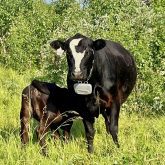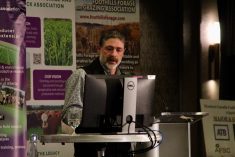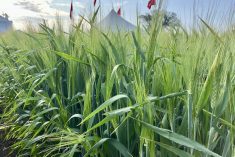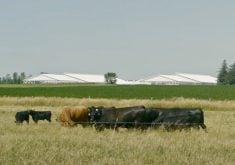A new report on Alberta’s grazing lease system by the provincial auditor general is throwing fuel on the long-simmering, controversial debate.
The report estimates the province could be losing up to $25 million annually by allowing ranchers to keep compensation from energy companies when they drill or lay a pipeline. The report also says the province is being shortchanged on lease payments, which haven’t gone up in more than two decades.
“The AG (auditor general) is stirring up a whole lot of fearmongering,” said Larry Sears, chair of the Alberta Grazing Leaseholders Association. “This is an issue we’ve been dealing with for 30 years. Every time we deal with it, it seems to crop up somewhere else, with more exaggeration and erroneous sorts of stories.
Read Also

What to know before you go to Agribition 2025
If you’re attending Agribition 2025, this is the place to find out about tickets, dates and what’s happening this year.
“When it is presented as truth by the auditor general, it gets more credibility in the public’s eyes.”
Not so, replied Cliff Wallis, spokesperson for the Alberta Wilderness Association.
“This report is a necessary first step,” he said. “Public lands are in essence a public resource. Ranching may have been the priority for 100 years but things change. To have the small number of leaseholders overriding the priorities of millions of Albertans — they shouldn’t have that much say.”
Since the late 1880s, Alberta ranchers have acted as the appointed stewards of much of this province’s public grasslands. In exchange for the right to graze their cattle on the land, holders of Alberta’s approximately 5,700 Crown land leases carry the responsibility of managing about five million acres of grasslands. While few dispute ranchers have done a good job of maintaining healthy and productive ecosystems, the question of the financial benefits they receive is getting increasing attention — especially because oil and gas activity on some of the Crown lands can make leases very lucrative. Under the current system, ranchers pay a lease fee to government but are entitled to keep dollars earned from charging energy companies for access to their leased lands.
Auditor General Merwan Saher came up with the $25-million figure by extrapolating public reports from 54 grazing associations. They paid roughly $60,000 in yearly rent for about 600,000 acres of public land, but collected nearly $350,000 in payments from energy companies.
Sears called the estimate “completely irresponsible.”
“He has no idea, nor have we,” said Sears, who ranches near Stavely. “He extrapolated that number over all the acreage and it’s completely wrong. Less than half of the leases have any oil and gas activity at all.”
Whether the number is correct or not, the debate about the principle behind surface rights payments remains.
“No Albertan should derive personal benefits from Alberta public assets beyond uses the assets are intended to provide,” Saher wrote in his report.
However, lease-holding ranchers argue surface right payments from oil and gas companies are fair and justified compensation for the significant disruption, damage and risk from oil and gas development carried by the rancher.
“The ranchers I talk to all seem to agree — while they recognize it is important that the province has oil and gas development, they wish it wasn’t on their land, even with the current payment structure,” said Sears. “The downside to changing the structure we’ve got is you’ll lose the vigilance of a day-to-day steward and on-the-ground manager.”
One thing all sides seem to agree on is the need for an adjustment of lease rates, unchanged since 1993 and far out of line with neighbouring provinces.
Sears said he expects to see rental rates rise to more than double. A big hike is needed both to improve the public’s perception of the system and to protect Canadian beef from competitors who might argue low rates equate to an unfair trade advantage.
Agreement on land access is a whole lot less likely.
“There’s never been a public lands policy or direction so we still have archaic ideas that the highest, best use of these public lands is agriculture — wildlife being secondary, recreation being even further down the list,” said Wallis. “Exclusive livestock grazing is not the right answer for public lands. Why is a small group able to dictate what is able to happen on our land?”
“Recreationists want to label this public land but in reality, these are Crown lands with an agricultural disposition and an agricultural priority,” replied Sears. “Ranchers make very extensive property and improvements on these lands. We have to make best decisions on our land. It cannot be unfettered access. This is our right to feed people.”
What happens next is anyone’s guess. Sears said he hopes meetings scheduled with the province will “give the AG a better understanding of an issue he knows little about” and that any changes will be made by provincial officials who understand the complexity of the issues.
Wallis counters that changes are necessary, for the good of the ecosystem, the citizens of Alberta, and leaseholders themselves.
“This is not an ‘us-versus-them’ issue,” he said. “We have lots of common interests with ranchers. If we can’t agree with where we want to go with public lands, there are lots of other people who have ideas with what to do with public lands, whether it’s off-highway vehicle use or wind farms.
“My hope for the next steps is we will actually get public lands policy that modernizes the approach to public lands for the 21st century. That includes foot access to leased land, a better rationale for lease fees, and surface rights payments going to Crown for dedicated conservation efforts.”
















